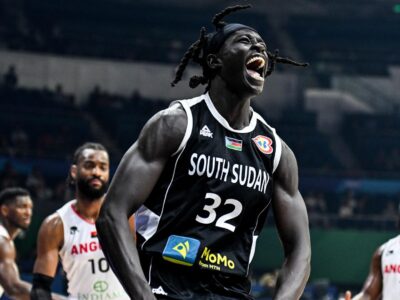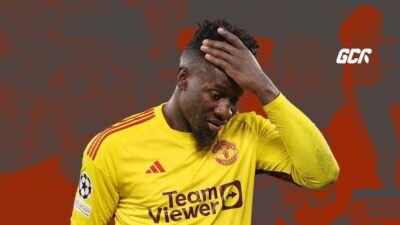Klay Thompson’s move to the Dallas Maverick was the final curtain call for the Golden State Warriors dynasty.
A formidable run that featured multiple record-shattering performances, historical collapses, unprecedented bounce-backs, and an all-time sharp-shooting duo has come to an end.
Life would not be the same seeing Stephen Curry on the court without his Splash Brother.
So, it’s time to roll back the years and relive the Warriors dynasty and how they changed basketball forever.
Let’s start from the very top.
The Rise of the Golden State Warriors
Since the 2014/2015 NBA season, the Golden State Warriors have been the most successful franchise, winning four titles – twice as many as any other franchise.
Prior to their excellence in 2015, the Warriors were quite exciting to watch. They enjoyed relatively low success but showed promise of better things to come.
The Monta Ellis era of the Golden State Warriors (2005-2012) was characterized by his dynamic scoring ability but also a lack of overall team success.
Ellis, a second-round pick in 2005, quickly became a fan favorite for his explosive speed, diverse scoring, and athleticism. In 2007, he won the NBA’s Most Improved Player Award.
During this period, Monta Ellis was the Warriors’ primary offensive weapon. His best seasons saw him averaging over 20 points per game, but the team struggled to make the playoffs, apart from the 2007 season.
Then came Mark Jackson. This was a pivotal period that laid the foundation for the team’s future success.
Mark Jackson, a former NBA point guard turned coach, inherited a team that had been struggling for years and transformed it into a defensive-minded and competitive unit.
When he took over in 2011, the Warriors were known primarily for their offensive talent but lacked defensive discipline.
Jackson emphasized a defense-first philosophy, which was a significant shift for the team. Under his leadership, the Warriors improved defensively, going from one of the worst defensive teams in the league to a top-tier defense.
Curry over Ellis
The Golden State Warriors decided to build around Stephen Curry following his 2009 draft, marking a franchise-altering moment that defined an era of basketball dominance.
Drafted 7th overall, Curry was often doubted due to his unassuming frame, “baby face,” and small stature (6’3″, 185 lbs) in a league dominated by physically imposing athletes.
Many analysts questioned whether Curry’s slight build could withstand the physicality of the NBA.
While he was a college star at Davidson, leading his team to the Elite Eight, his frail appearance and concerns over ankle injuries cast doubts on his potential to thrive as an NBA superstar.
At the time, the Warriors were Monta Ellis’ team. However, pairing him with Curry in the backcourt led to chemistry issues, as both were ball-dominant guards.
Ellis’ defensive limitations also clashed with Curry’s need for space and a more complementary system.
In a 2009 media day interview, he famously said, “Us together? No… You can’t put two small guys out there and try to play the 1 and the 2”.
And he was right. The organization had to make a surgical decision—the savvy veteran or the green rookie.
In 2012, the Warriors made a bold decision, trading Ellis to the Milwaukee Bucks and committing to building around Curry.
This decision was initially controversial among fans, but it became a defining moment in the team’s trajectory.
Although one would expect some atoms of vile remarks from Ellis toward Curry and the Warriors franchise, he harbored no hard feelings toward Curry and even called him after the trade to offer support. He told Curry to “keep working hard” and that once he turned things around, everyone would jump on his bandwagon.
With Ellis gone, the Warriors created a system tailored to Curry’s strengths—his quick release, deep shooting range, and high basketball IQ.
The Core of the Dynasty
The trio of Stephen Curry, Klay Thompson, and Draymond Green transformed the Golden State Warriors into one of the most dominant teams in NBA history.
Known as the “Splash Brothers,” Steph Curry and Klay Thompson revolutionized the game with their unparalleled shooting and versatile scoring.
Their ability to consistently hit three-pointers from well beyond the arc stretched defenses to their limits, ushering in a new era where teams across the league adopted long-range shooting as a central strategy.
Curry’s deep shooting, quick release, and ball-handling wizardry made him a two-time MVP, while Thompson’s sharpshooting and perimeter defense complemented Curry perfectly.
Together, their chemistry on the court created a dynamic backcourt that was nearly impossible to defend. Their spacing, off-ball movement, and ability to hit shots from any distance redefined offensive schemes.
They proved that championships could be won by outshooting opponents, which significantly altered the NBA’s playing style, as teams increasingly prioritized three-point shooting over traditional post play.
Draymond Green provided the perfect counterbalance to the Splash Brothers’ finesse with his grit and defensive intensity.
Acting as the team’s “enforcer,” Green played a role similar to Dennis Rodman during the Chicago Bulls’ championship years. Green could guard multiple positions, act as a playmaker, and anchor the Warriors’ defense.
What Draymond does for Steph and Klay is the same with what Rodman did for MJ and Pippen#DraymondGreen #NBAMemes pic.twitter.com/0U90eYxYkO
— Warriors Nation (@WarriorNationCP) April 8, 2021
His emotional leadership and physical style of play set the tone for the team, while his ability to handle the ball allowed Curry and Thompson to operate freely off the ball.
Considering these sets of players were relatively smaller than other players in their respective positions, their chemistry made them unplayable against any opponent.
Together, Curry, Thompson, and Green formed the core of a dynasty that won four NBA titles, reshaping the modern game and leaving an indelible mark on basketball history.
The Early Years
The addition of Curry, Thompson and Green paved the way for a unique playstyle that prioritizes intense offense and efficient defense.
The Warriors’ chemistry blossomed under head coach Mark Jackson, but it was Steve Kerr’s arrival in 2014 that unlocked their full potential.
Kerr introduced a faster-paced, ball-movement-heavy offense that maximized Curry’s and Thompson’s shooting while allowing Green to flourish as a playmaker and defensive anchor.
Renowned for his usage of guards and “smaller” front-court players, Kerr introduced a style of play that was met with mixed reactions.
I found it intriguing that a sport which is predominantly played by bigger players could be dominated by a group of relatively “smaller” players.
Notwithstanding their size, the Warriors were very effective at both ends of the court, with a starting lineup and bench players who played key roles throughout the entire season.
This starting lineup was known for its chemistry and balance, with Curry and Thompson providing outside shooting, Green and Bogut anchoring the defense, and Barnes offering versatility.
During crunch time, Andre Iguodala often substituted in for Bogut or Barnes, providing added perimeter defense and versatility, particularly during the Warriors’ transition to their “small ball” lineup, which became known as the “Death Lineup.”
Record Breakers
The 2014-2015 season was a breakthrough, as the Warriors posted a 67-15 regular-season record and captured their first NBA title in 40 years, defeating LeBron James’ Cleveland Cavaliers.
The following season, the Warriors set an unprecedented regular-season record of 73-9, breaking the 1996 Chicago Bulls’ 72-10 record.
However, despite their historic run, the Warriors suffered a shocking defeat in the 2016 NBA Finals.
After leading the Cavaliers 3-1 in the series, the Warriors became the first team to lose the Finals after holding a 3-1 advantage, a historical collapse that spurred the need for reassessment of the team.
The Impact of Kevin Durant
The Golden State Warriors’ decision to sign Kevin Durant in the summer of 2016 was a significant move that further solidified their dominance in the NBA.
Coming off a 73-9 season and a heartbreaking loss to the Cleveland Cavaliers in the 2016 NBA Finals, the Warriors sought to enhance their already potent lineup.
Kevin Durant, a former MVP and one of the league’s top scorers, immediately transformed the Warriors from a powerhouse to an overwhelming super team.
The fans hated it. OKC fans called his “cupcake” for quitting on them and joining a super team. Russell Westbrook openly disdained him for this move and led the chants.
Regardless of the negativity surrounding this move, Durant’s presence on the court had an immediate impact.
The Warriors became nearly unstoppable, combining the firepower of Stephen Curry, Klay Thompson, and Draymond Green with Kevin Durant’s elite scoring, versatility, and defense.
His ability to score at all three levels added another dimension to the Warriors’ already deadly offense.
He was able to wiggle his way through opposing guards, and go toe-to-toe with fellow “Big Men” within the arc.
During his tenure from 2016 to 2019, the Warriors won two consecutive NBA championships in 2017 and 2018, with Durant earning Finals MVP both times for his dominant performances.
The team’s unselfish ball movement, spacing, and high basketball IQ made them a near-perfect unit.
Signs of Tension
However, cracks in the Warriors’ chemistry surfaced during the 2018-2019 season, most notably in a heated on-court argument between Durant and Draymond Green during a game against the Clippers.
Draymond Green challenged KD about Durant's impending free agency during exchange on court, per @ShamsCharania pic.twitter.com/hi4R5NzGyU
— Bleacher Report (@BleacherReport) November 13, 2018
The confrontation, where Green allegedly questioned Durant’s loyalty to the team, showcased underlying tensions in the locker room.
Though the Warriors tried to downplay the incident, it highlighted the strain of managing such star power and raised doubts about Durant’s future with the team.
Despite the tension, Durant’s time in Golden State solidified the Warriors’ place in NBA history as one of the greatest dynasties.
However, the conflict with Green foreshadowed Durant’s eventual departure in 2019.
The Start of the Decline
Injuries were heavily responsible for the downfall of the Golden State Warriors’ dynasty in 2019, particularly during their Finals run.
Kevin Durant and Klay Thompson, two key players, both suffered severe injuries that altered the course of the championship series and the Warriors’ long-term trajectory.
Virtually every knowledgeable sport fan knows that long-term injuries to several key players in crucial moments of a season spells doom for a team challenging for silverware.
This unfortunately hindered the Warriors’ quest for a third consecutive NBA title, in what was a tough pill to swallow for the Dubs.
During the 2019 NBA Playoffs, Durant was in peak form until he suffered a calf injury in the Western Conference Semifinals against the Houston Rockets.
Despite missing the Conference Finals, Durant returned during Game 5 of the NBA Finals against the Toronto Raptors.
However, in that game, Durant tragically ruptured his Achilles tendon, sidelining him for an entire year and ultimately leading to his departure from the Warriors that offseason.
Klay Thompson, meanwhile, was also pivotal throughout the Warriors’ Finals run.
In Game 6 of the Finals, with the Warriors trailing in the series 3-2, Thompson was carrying the team until he tore his ACL after a fast-break dunk attempt.
Warriors confirm Klay Thompson tore his ACL. https://t.co/PJsY09MJM4 pic.twitter.com/nULx5nrtMs
— Complex (@Complex) June 14, 2019
This injury not only ended Thompson’s season but also significantly reduced the Warriors’ chances of extending the series to a Game 7. Without Thompson and Durant, the Warriors lost the Finals, ending their quest for a three-peat.
Kevin Durant left for the Brooklyn Nets in free agency, while Thompson missed the entire 2019-2020 season.
Coupled with other injuries, including Stephen Curry’s broken hand early in the following season, the Warriors struggled to maintain their competitive edge.
The Post-Durant Era
After Kevin Durant’s departure in 2019, the Golden State Warriors faced significant challenges in maintaining their competitive edge.
Durant’s exit to the Brooklyn Nets marked the end of an era, and the Warriors, already dealing with major injuries, were thrust into a period of transition and rebuilding.
The 2019-2020 season was particularly difficult. Klay Thompson missed the entire season due to an ACL tear sustained in the 2019 Finals, while Stephen Curry played only five games after suffering a broken hand early in the season.
The team, deprived of its core stars, finished with a league-worst 15-50 record. The roster, filled with young and inexperienced players, struggled to compete.
The Warriors had to rely heavily on role players like Eric Paschall and Andrew Wiggins, who they acquired midseason.
One could argue that the “Bubble Season” does not really count, and the outcomes of the events during that season were played in entirely different settings.
But the situation associated with the 2019-2020 season could not shade the obvious turmoil within the Warriors’ camp.
In the 2020-2021 season, the Warriors showed signs of recovery, largely thanks to Curry’s return to MVP form.
Despite Curry’s brilliance, the team still lacked depth and struggled to compete at the highest level without Thompson.
They finished 39-33, securing a spot in the play-in tournament but ultimately missed the playoffs after losses to the Lakers and Grizzlies.
The 2022 Championship
The Golden State Warriors’ return to the NBA Finals in 2022 surprised many, especially after a challenging few years due to injuries and roster changes.
Their path to the title was marked by key factors, including the return of core players, the emergence of young talents like Jordan Poole, and strategic coaching from Steve Kerr.
In the Western Conference Semifinals, the Warriors faced the Memphis Grizzlies, led by star point guard Ja Morant.
Known for his bold confidence, Morant famously declared he was “good in the West”, dismissing the relevance of the aging stars on the Warriors.
Despite Morant’s explosive play and a 47-point performance in Game 2, the Warriors outlasted the Grizzlies in six games.
Morant missed the last two games of the series due to injury, but Golden State’s experience and resilience were crucial in overcoming the young Grizzlies.
In the NBA Finals, the Warriors faced the Boston Celtics, a defensive powerhouse with established stars like Jayson Tatum, Jaylen Brown, and Marcus Smart.
Though the Celtics were relatively young, they had gained significant playoff experience in prior seasons. Despite Boston taking a 2-1 series lead, Golden State’s championship pedigree shone through.
The Warriors won the series in six games, clinching their fourth championship in eight years.
Amidst the surprising triumph were questionable feelings regarding the state of the Warriors rebuilding.
Some viewed the group’s success as a continuation of the Warriors’ dominance, while others believed their performance was a final push from “The Core.”
I believed that the latter was not really the case, and the group of players that won the 2022 Series had more to offer.
In spite of what fans and media outlet perception might have been, the Warriors put up a performance worthy of earning “a chip”.
The Decline
During the 2022 offseason, a video surfaced on the internet showing the moment when Draymond Green punched Jordan Poole during practice.
We finally found out what Poole said that made Draymond punch him😭😭 pic.twitter.com/fa6AUbm2k2
— Hoops (@HoopMixOnly) September 29, 2023
Although both players downplayed the incident, it raised concerns about locker room chemistry. Poole’s subsequent trade signaled deeper issues behind the scenes.
Andrew Wiggins, who was vital in the Warriors’ 2022 championship run, struggled to meet expectations after securing his ring.
Meanwhile, Klay Thompson continued to struggle in his quest to regain his pre-injury form. Despite flashes of brilliance, Klay’s shooting inconsistencies and defensive regression made it clear he was no longer the player he once was.
The 2023-2024 season saw an aging core battle to maintain dominance in an increasingly competitive Western Conference.
With Curry still performing at a high level, the Warriors’ success largely depended on the emergence of young players like Moses Moody and Jonathan Kuminga.
However, these newcomers struggled to live up to the legacy of Warriors’ past dynasties, and the team suffered a dismal playoff run, exiting early and raising questions about their future.
As the season came to a close, Klay Thompson, once a key figure in Golden State’s dynasty, exited the Warriors with a whimper, scoring little and delivering a lackluster final performance.
Shooting a horrendous zero out of ten field goal attempts in the NBA Play-In Tournament against the Sacramento Kings, including going 0/6 from beyond the arc, this game felt like dagger through the heart of Thompson’s Warriors spell.
It was a gloomy end to an illustrious career, marking the end of an era for the Warriors. The team now faces a difficult road ahead, with questions about whether their dynasty has finally reached its end.
The Legacy of the Warriors Dynasty
I find it very fascinating that a team consisting of not a single “first round, first pick” drafted player went on to do such amazing feats in the NBA.
Their success and dominance over the years is testament to the amazing coaching and collective brilliance by those groups of players.
Steph Curry further solidified his claim as one of the greatest point guards of all-time with his performance at the Paris 2024 Olympics.
Curry, who played primarily as a creator and playmaker in the initial stages of the tournament, exploded during Team USA’s semifinal and final matchup in the Olympics.
Steph Curry and Kevin Durant are in the NBA Top 75 and will probably become first-ballot Hall of Famers.
While there were debates that the pair of Draymond Green and Klay Thompson ought to have made the list, their contribution to the Warriors dominance earned them a legendary status within the Dub Nation.
Curry and Durant are also near-certainties first-ballot Hall of Fame candidates, while Thompson and Green are worthy mentions considering their contribution to the Warriors’ success.
The Warriors revolutionized the playing style in basketball, making the 3-ball more effective, and transforming it from a last resort tactic to a first-option tactic for teams to deploy.
Draymond Green, being a Warriors player, has a legacy of his own.
Famous for his kicks, punches, antics and flagrant fouls on the court, he was often seen in altercation with players, which gave him some sort of a “bad guy” persona in the eyes of the fans and media.
Draymond Green has inked a deal with NBA on TNT to be the first active player to contribute to 'Inside the NBA'. 👏 pic.twitter.com/EeKgaibyot
— NBA Retweet (@RTNBA) January 27, 2022
Still part of the setup, he has now made strides in media and broadcasting, featuring on his own podcast and the NBA on TNT.
In all, the Warriors Dynasty is one of the greatest sides in NBA history, and their impact on the game of basketball will continue to be evident in the future.
Who wrote this?
Bienuoma Agaga-Akpati is a software engineer, writer, eSports player, and sports enthusiast, presently working with a group of ambitious Africans to transform the writing industry. With good knowledge of various sports and eSports, coupled with his keen ability for research, he loves analyzing ideas and topics that fosters the growth of the sport and eSports scenes. In his spare time, he enjoys creating content and engaging in discussions across various platforms.























